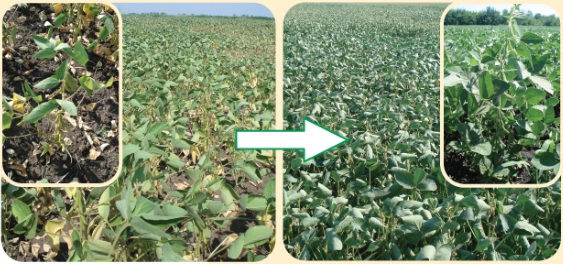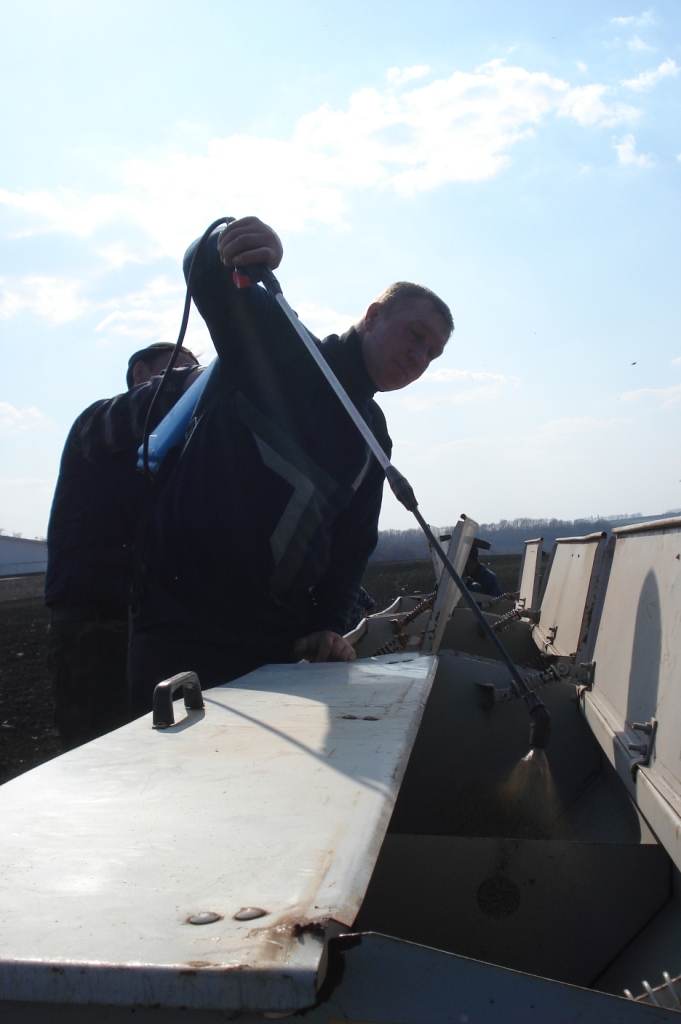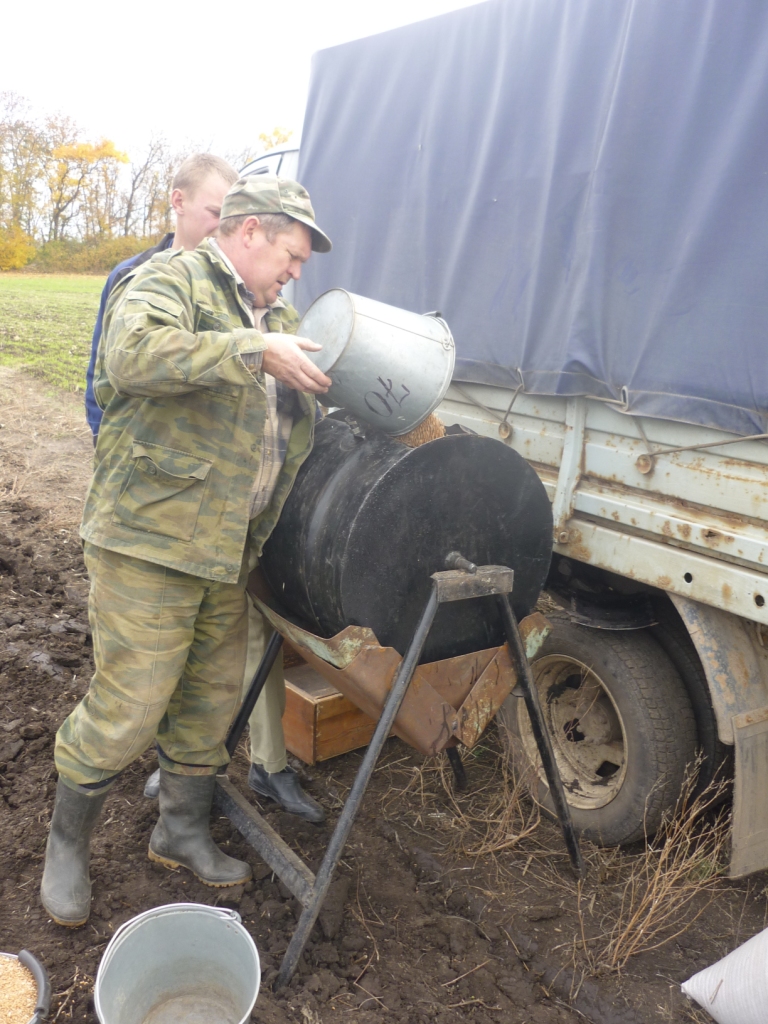Company production
Company production
RISOBAKT SP – A BIOTECHNOLOGY FOR ENSURING BETTER YIELDS OF GRAIN LEGUMES (SOY, GREEN PEAS, CHICK PEAS, ETC.)
With a glance to these new climatic realities, LLC "Petersburg Biotechnologies" specialists have developed a BIOTECHNOLOGY for growing legumes which allows you to have stable yields of legumes both in normal conditions and during droughts (with only 50-100 mm of rain during a season) at the standard rates of their productivity, as with conventional fertilizer and fungicide technologies, and even higher.
Benefits of THE BIOTECHNOLOGY
1). Formation of an active symbiotic apparatus at earliest development phases:

- air-nitrogen extraction begins even before the formation of tubercles due to activization of nitrogen-extracting rhizosphere bacteria;
- tubercles form themselves and become active 5-10 days earlier (they gain the red or pink colour);
- phosphorus nutrition of plants at the crucial, early phase of the growth of legumes is supplied by means of activization of the work of phosphorus-extracting rhiso-bacteria;
- rhizosphere germs drive pathogenic microflora out from plants’ roots mechanically or due to release of antibiotics; i.e. they work better and in a more selective way than any type of known fungicides.
2). Beneficial development of legume plants in dry climates:

- a lot of root fibrils form themselves on plants’ root system, these fibrils working in a capillary way extract moist from tiny pores of soil and supply it to the plant;
- in the context of tubercle necrosis of if they go inactive due to critical ambient temperatures, nitrogen extraction goes on thanks to activization of rhizosphere bacteria.
3). Grain yield stable over years: in drought conditions (50-100 mm precipitation) up to 15-20 metric centners per hectare, in normal conditions (200-400 mm precipitation) up to 25-40 metric centners per hectare. Average increase of productivity compared with natural fertility – 4-5 metric centners per hectare, protein or lipid content – by 5%. Production rates in such regions of Russia as Ryazan, Tula, Voronezh, Saratov, Volgograd, Belgorod, Nizhny Novgorod, Rostov, Omsk, Amur, Krasnodar and Stavropol, Altay, Kabardino-Balkaria and Chuvash Republics, etc.
TABLE 1. COST AND EFFICIENCY OF THE BIOTECHNOLOTY FOR DIFFERENT LEGUMES
| Species |
Seed rate |
Risobakt SP, 1 liter/ton | Cost* RUB/ha |
Improvement** centner/ha |
|
| k.zh.f. |
r.zh.f. |
||||
| SOYA | 70...100 | 1,0 | 1,0 | 120...170 |
4,0...5,0 |
| PEA | 300...350 |
0,25 | 0,25 | 210...250 | 5,0...10,0 |
| CHICK-PEA | 100...150 | 1,0 | 0,5 | 200...300 | 2,0...7,0 |
| BEAN | 200...250 | 0,5 | 0,5 | 270...335 | 4,0...6,0 |
| HARICOT | 80...120 | 1,0 | 1,0 | 200...310 | 3,0...5,0 |
| VETCH | 100...200 | 0,5 | 0,5 | 130...270 | 3,0...4,0 |
| LENTIL | 100...150 | 0,5 | 0,5 | 130...200 | 3,0...4,0 |
| VETCHLING | 150...250 | 0,5 | 0,5 | 200...335 | 3,0...4,0 |
*Cost per square unit (1 hectare) depends on seed rate
**Additional yield per hectare compared with natural soil fertility
The liquid form of Risobakt SP is easy to use in any type of farm.




